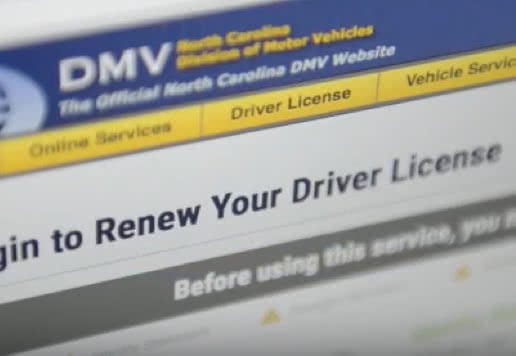
It is not only widely accepted but widely expected that the Division of Motor Vehicles does not serve its customers well. The Joint Legislative Transportation Oversight Committee will meet Thursday, Feb. 29 to address this and other topics with DMV Commissioner Wayne Goodwin.
When U.S. Army veteran Tyler Tickle moved to North Carolina from Ohio, he went to four DMV offices to get a license in his new state. Even though he arrived “as early as possible,” he was told he wouldn’t be seen that day, with employees recommending an appointment. Tickle experienced the inevitability of the online appointment system—none are available for three months. So, three months later, Tickle was back in the hopes of checking the requirement off his list.
“Zero out of 10,” he said. “I’m extremely unhappy with this whole DMV issue.”
Tickle’s experience is representative of what many customers encounter.
Customers run into multiple roadblocks when on the DMV’s website. They can’t always tell what services are available online. They receive instructions from the website and the email help desk that conflict with what they hear when they go to a driver’s license or license plate office. They often find appointments booked for the next three months because the DMV only provides appointments in the morning, which leads people to go early in the morning to their local office or drive hours away to an office they know has shorter turnarounds.
“Zero out of 10.”
New N.C. resident Tyler Tickle rating his DMV experience
When people give up and go to the driver’s license office without an appointment, the in-person experience is also rife with frustrations. The DMV touts its “queue anywhere” system that lets people check-in with a QR code or text message and leave the line, but some offices do not display the code at all, others make it available only after noon. Some offices have the QR code inside and make it available only after verifying a customer has the right paperwork, while others have it in the parking lot. This means there is no clear measure of wait times from one office to another. Worse, nobody can check in from their home, something that restaurants and chain hair salons offer.
At least two people who spoke with legislative staff said the instructions they received at the office differed from what they found online or received by email. One exasperated customer said, “I think if you get anything straightened out at the DMV, it’s a miracle.”
Not surprisingly, parents of new teen drivers are among the most frustrated. From the first learner’s permit to their full provisional license, teens must appear at the DMV three times in 18 months. Because the DMV’s online appointment book only goes out three months, they cannot set their next appointment when they are in the office, something any dentist’s office can do. Some of these visits could even be handled online.
“This office is a madhouse with people coming from all over the state,” one DMV employee said. “My people work hard, we get ’em in and get ’em out.”
Staff at driver’s license offices and license plate agencies are professional and courteous, making the best of a difficult situation and often instituting productivity hacks to improve customer service. The systemic fixes that are needed will require the DMV’s leadership to put the same emphasis on customers whether online or in person.
Thursday’s hearing will address a range of other issues DMV internally, with franchised license plate agencies, car dealers, and vendors that all impact customer service.
Despite the challenges, Rep. Howard Penny (R-Harnett, Johnston) is looking for progress at the committee meeting: “It is our job to make sure the DMV operates as efficiently and effectively as possible.”